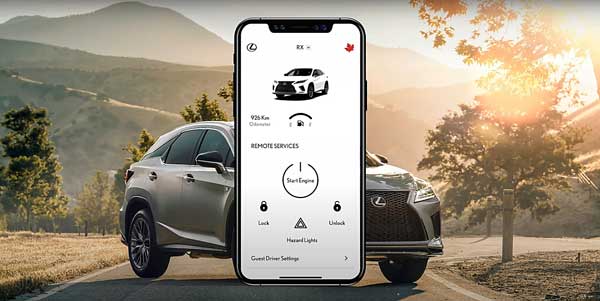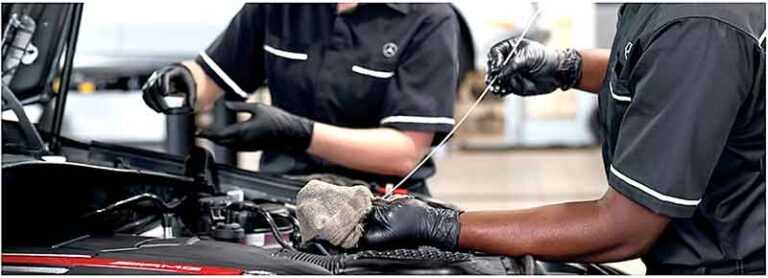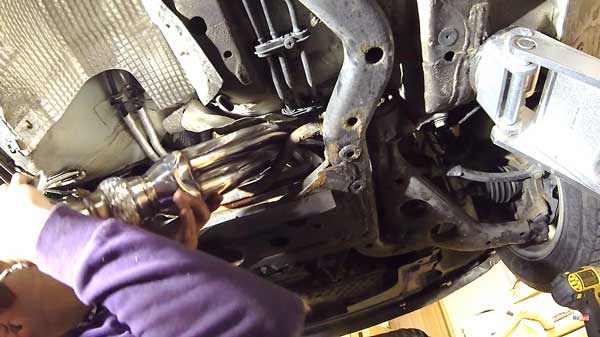Does Audi Show Tire Pressure?
Are Audis equipped with tire pressure monitors and what are the procedures for monitoring them?
When it comes to maintaining your vehicle and ensuring it’s safe and functional, one of the most important things to consider is managing your tire pressure. Keeping your tires properly inflated is not only important for optimum fuel efficiency but also plays an important role in improving handling and reducing the risk of accidents If you own an Audi or are thinking of buy one, you may want to know if Audis offers a proper way to monitor tire pressure.
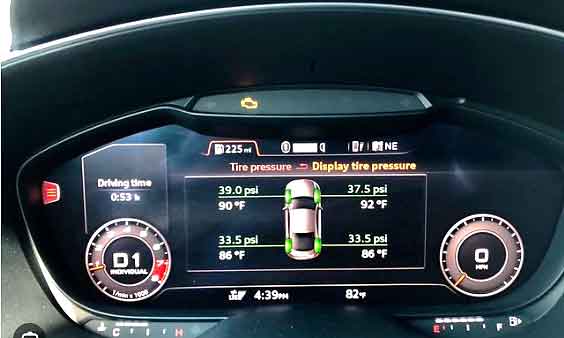
In this article, we’ll delve into tire pressure monitoring on Audis and discuss the available monitoring options. We will require Audi to provide a built-in tire pressure information system and highlight any other equipment or features that allow you to determine your tire pressure level. By the end of this article, you will have a better understanding of how Audi vehicles deal with tire pressure monitoring and how you can best maintain optimal tire pressure for a safe and smooth driving experience.
Understanding the Importance of Tire Pressure
Before examining the Audi’s distinctive features, let’s take a moment to consider the importance of maintaining proper tire pressure. The air pressure in your tires plays an important role in how well they perform and how long they last.
- If the pressure is too low, it can increase tire pressure during tire pressure, ultimately affecting the fuel efficiency of your vehicle.
- In addition, insufficient tire pressure can accelerate the wear and tear of your tires, leading to more frequent changes.
Conversely, if your tires are overinflated,
- You may experience a stiff and uncomfortable ride.
- Additionally, excessive pressure can compromise a tire’s road grip, posing a safety hazard while driving.
- Reduced suspension indicates that you may have difficulty controlling your vehicle, especially in challenging road conditions or during sudden man oeuvres.
Therefore, it is important to check and maintain your Audi tire pressure on a regular basis. By doing so, you can improve fuel efficiency, extend tire life, and ensure a more comfortable and safe driving experience.
Tire Pressure Monitoring Systems (TPMS)
Making sure your tires have the right air pressure is important, and Audi and other automakers recognize this by adding a Tire Pressure Monitoring System (TPMS) to their modern vehicles. These TPMS are electronic systems designed to monitor tire pressure and notify the driver if a tire drops below the recommended level.
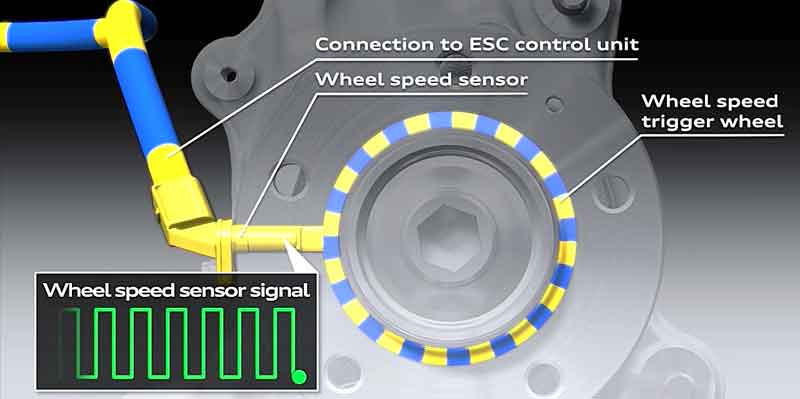
Getting the right tire pressure is important for a variety of reasons. It directly affects your safety on the road, as poorly inflated tires can reduce traction, worsen damage and increase the risk of accidents Furthermore, proper tire pressure increases fuel efficiency, extends tire life and enhances overall driving efficiency.
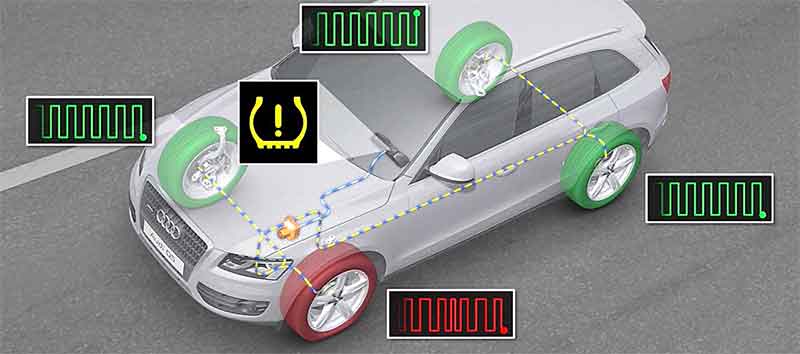
TPMS technology no longer allows drivers to rely solely on manual inspections or assumptions to ensure proper tire inflation. The system continuously monitors tire pressure, sending a real-time alert to the driver if any tire pressure falls below recommended levels This proactive approach allows drivers to take immediate action, and troubleshoot before it turns into a potential hazard.
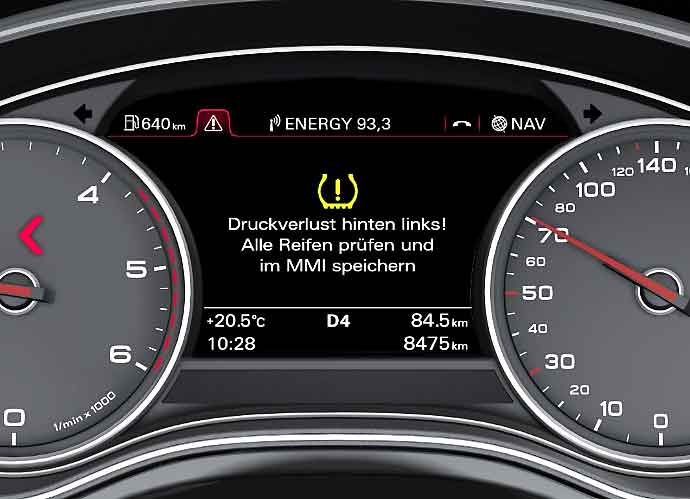
Through the integration of TPMS (Tire Pressure Monitoring System) in their vehicles, Audi and various other automakers demonstrate a strong commitment to prioritizing the safety and well-being of both drivers and passengers. This underscores the significance of keeping tire pressure at its optimal levels, resulting in a driving experience that is centered around simplicity, safety, and efficiency.
Direct TPMS vs. Indirect TPMS
In essence, there exist two primary categories of tire pressure monitoring systems (TPMS): direct TPMS and indirect TPMS. The direct TPMS employs an individual sensor in each tire to directly gauge the tire pressure. This data is subsequently transmitted to the onboard computer for analysis and continuous monitoring. On the other hand, the indirect TPMS follows a distinct approach utilizing the vehicle’s braking system (ABS). It computes the tire pressure by closely analyzing the information obtained from the wheel speed sensor.
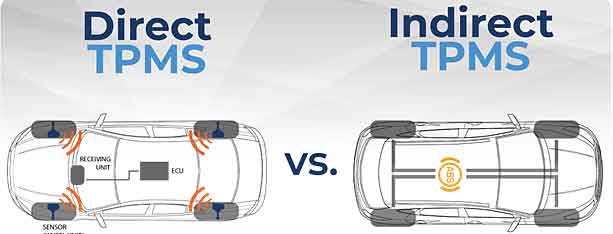
The direct TPMS method ensures precise and accurate measurement of tire pressure when the sensors are placed directly under the tire. This allows for real-time monitoring and early detection of any changes or abnormalities in tire pressure. Indirect TPMS, on the other hand, relies on the relationship between wheel speed and tire pressure to estimate tire pressure indirectly and, although it cannot provide the same accuracy as direct TPMS, is a system a useful for monitoring tire pressure.
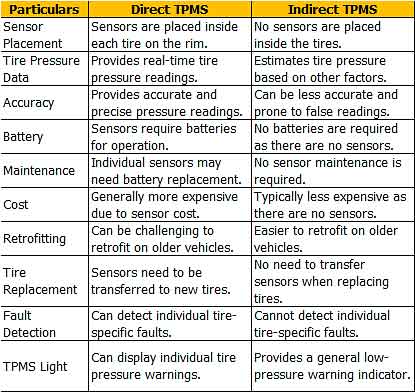
Both direct and indirect TPMS play an important role in maintaining optimum tire pressure, which is essential for road safety and overall vehicle performance.
Audi’s TPMS System
Audi vehicles typically use a direct TPMS (Tire Pressure Monitoring System), which is a tire pressure monitor that constantly monitors tire pressure through special sensors inside the tires These sensors work hard to collect information about pressure levels real-time solutions and directly to the vehicle’s computer system. This intelligent system allows the vehicle’s computer to effortlessly display tire pressure information on the dashboard, making it easier for the driver to access this vital information.

Featuring this advanced technology, Audi vehicles prioritize the safety and comfort of their drivers. With the built-in TPMS system, there is no need to manually check or calculate tire pressures. Sensors actively monitor pressure, providing driver peace of mind and tire performance. This means Audi owners can enjoy a smoother and more comfortable driving experience while reducing the risk of tire problems. With real-time tire pressure updates readily available, Audi drivers can proactively take necessary actions, such as inflating tires to recommended pressure levels, to increase safety at the road.
Displaying Tire Pressure on Audi Dashboards
Audi vehicles come with a helpful feature called a driver information system that displays important information about the vehicle. Part of the important information it provides is tire pressure. Whether you drive an Audi sedan or SUV, the tire pressure display is easily accessible. Depending on the specific model and trim level, this display can be viewed in the instrument cluster, where your speedometer and other gauges are located, or on the center display bar.
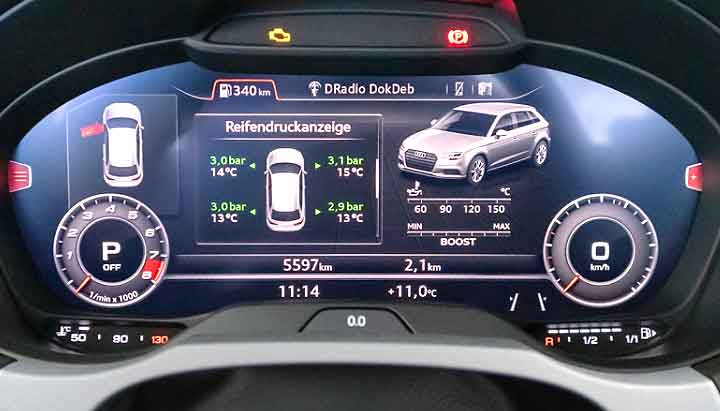
The tire pressure gauge is designed to provide you with information about your tire health. It shows the current pressure on each tire, so you can make sure they are properly calibrated. Maintaining proper tire pressure is essential for optimal safety and performance. With this feature, Audi makes it easy for drivers to check their tire pressure and take necessary action if adjustments are needed.
Whether you’re starting a long road trip or just heading to work, being able to check tire pressure at once gives you peace of mind and contributes to the overall performance of your Audi.
Using the Driver Information System
If you need to check the pressure of your Audi tires, you can easily do so with the controls on your steering wheel. Your car has a built-in driver profile that can have various settings and details. You should go through this chart for tire pressure information. Look for a specific button dedicated to tire pressure or use the multifunction buttons on the steering wheel to navigate through options until you reach the tire pressure display.
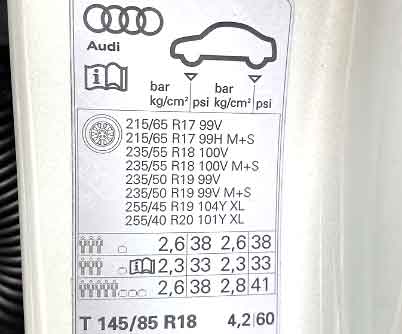
Once you have the tire pressure gauge, you can see the pressure reading for each tire. This feature is handy because it lets you know if one of your tires is under-inflated or if the inflation is too high. Maintaining proper tire pressure is important for your safety and the performance of your vehicle. Low tire pressures can affect your vehicle’s handling and reduce fuel economy, while higher pressures can cause abnormal tire wear. By regularly monitoring tire pressure through a driver information system, you can ensure your Audi is performing optimally and maximize its life.
Monitoring Tire Pressure Outside the Vehicle
Aside from the driver information systems already built into their cars, Audi is going to offer new options for monitoring tire pressure even when you’re not in the car. On some Audi models they are equipped with smartphone applications that allow you to interact with your vehicle and access important information about your vehicle, such as tire pressure, these handy apps go beyond just displaying data; They provide real-time updates and information, ensuring that you are always in the know, no matter where you are.
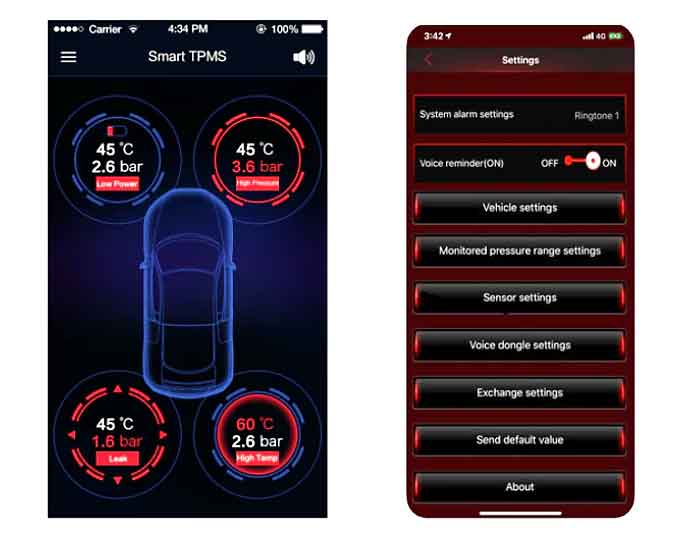
The Audi smartphone app makes it easy to check your tire pressure from your home, office, or anywhere else. This feature proves invaluable, as it allows you to monitor and control optimal tire pressures without physically approaching your vehicle. By receiving instant updates and tire pressure alerts, you can quickly deal with any derailments or potential problems, ensuring your safety on the road.
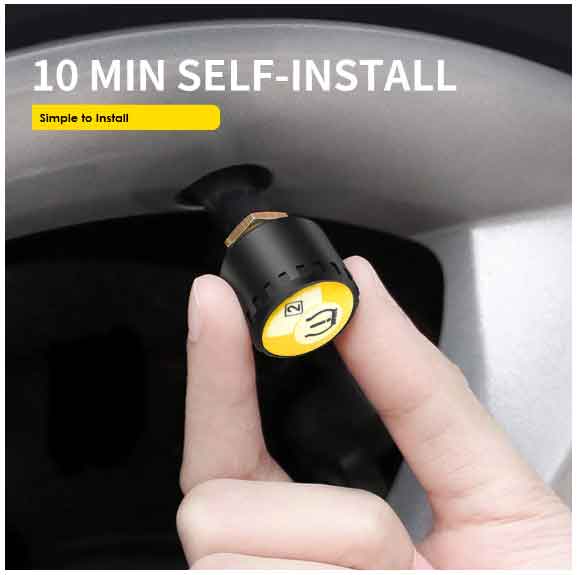
With Audi’s commitment to innovation and customer convenience, staying up-to-date on your car’s tire pressure has never been easier. Their user-friendly smartphone apps provide an easy and effective way to access important vehicle information, allowing you to control the maintenance of your vehicle and provide a smooth driving experience and it is not anxiety.
Regular Tire Inspections
The Audi TPMS (Tire Pressure Monitoring System) provides an easy way to monitor your tire pressure, but it’s important not to rely solely on it. Regular tire inspections and manual tire pressure checks are essential to ensure you are safe on the road. By thoroughly examining your tires for visible signs of damage such as cuts or chips, you can uncover issues that could compromise your safety Remember that even with a TPMS installation, you won’t always find tire problems a. So taking the time to visually inspect your tires is key to maintaining the best possible condition.
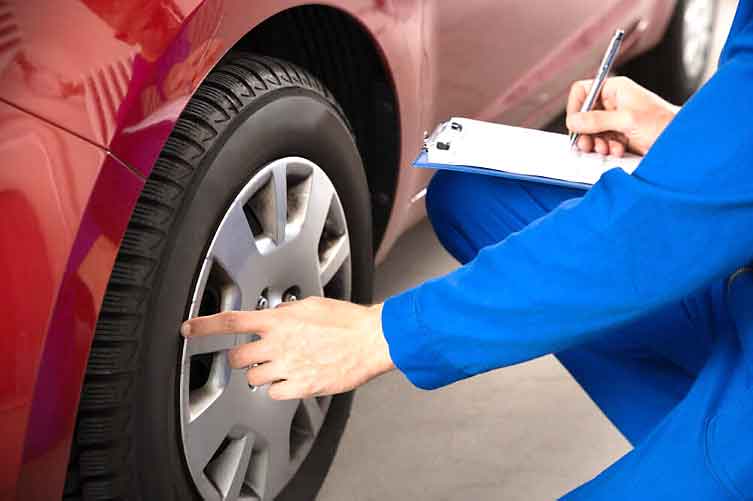
Also, it is highly recommended that you use a reliable tire pressure gauge to check tire pressure manually. As the TPMS provides pressure information, more accurate and precise readings can be obtained by using a gauge. By measuring pressure manually you can ensure your tire inflation is up to the correct level, which is important for optimal performance, fuel economy and overall safety Remember, to be sharp on the eyes so inspection and manual pressure analysis in which will help you diagnose tire problems quickly and easily -It will provide a safe driving experience.
Proper Tire Inflation
If you find that your Audi’s tire pressure is lower than recommended, it is important to take immediate action and inflate them. Fortunately, most Audi models come with a tire inflation kit that includes a portable air compressor and sealant designed to fix minor leaks This kit can be much easier on fixing minor problems with your tires.
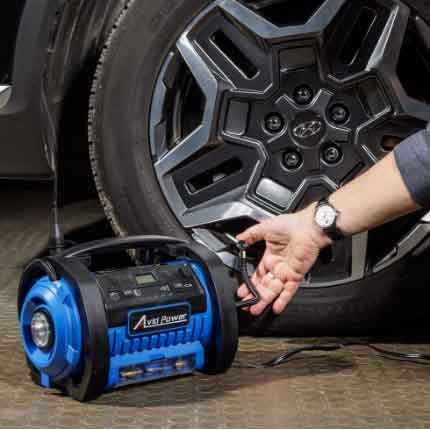
However, if you are experiencing more serious problems with your tires, it is highly recommended that you seek the help of a professional tire repair shop. They have the knowledge and tools needed to properly address critical tire issues. No tire problems should be overlooked, as maintaining proper tire pressure is essential to your safety on the road and the overall performance of your Audi.
Regularly checking and maintaining proper tire pressure will help provide a smoother driving experience and help prevent possible tire damage or accidents so, be sure to check your Audi tire pressure and optimal performance and safety Check that and take appropriate measures as soon as possible.
The Convenience of Audi’s TPMS
Audi vehicles typically have a direct TPMS system to optimize tire pressure monitoring in real time. This accessory allows you to see the quality of your tires. Tire pressure information is easily accessible through the driver information system in the instrument cluster or center display screen. Audi also goes a step further by offering smartphone apps that let you monitor tire pressure remotely. These developments bring security and peace.
However, it is important not to rely solely on technology. Regular visual inspections and manual pressure checks are essential to ensure your tires are properly inflated. By doing so, you can make a significant contribution to your Audi’s optimal performance.
Maintaining proper tire pressure has many benefits, including better fuel economy, better overall vehicle performance, and most importantly, increased road safety Remember you tires are the only point where your Audi is in contact with the road, so keep them in good condition for a smooth and safe driving experience Above all.


